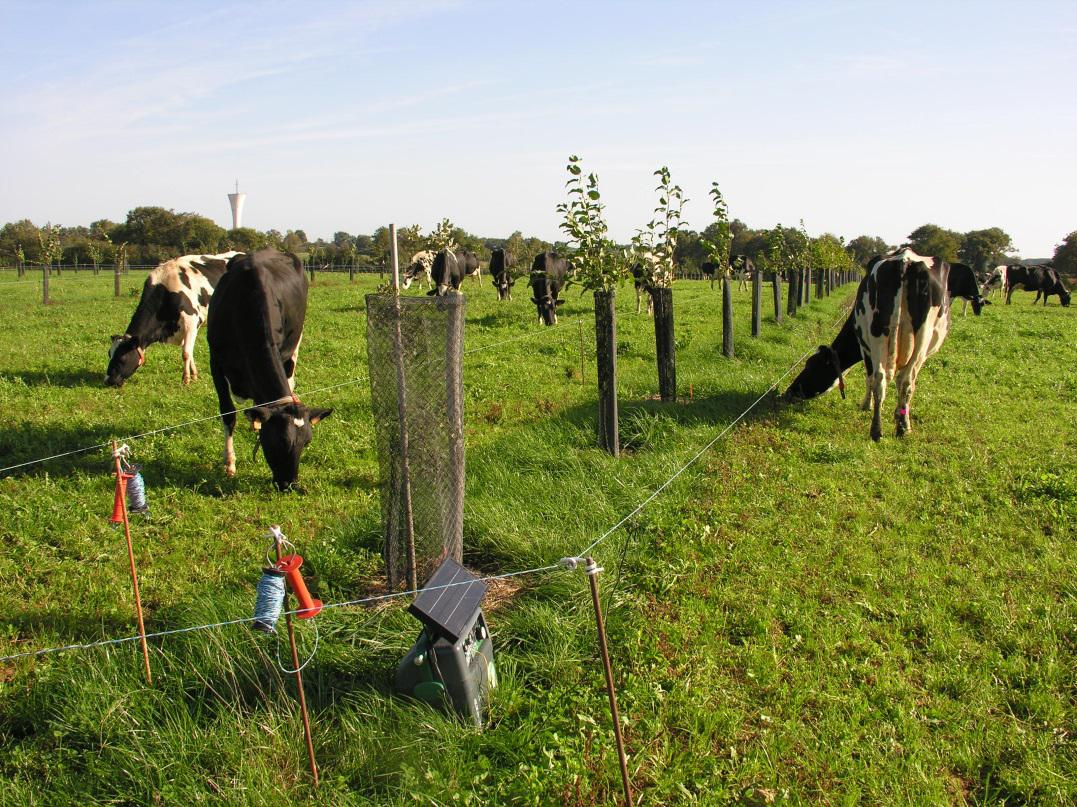
L'agroforesterie et les ruminants en France
Description du système
Des stations expérimentales et des fermes sélectionnées dans toute la France ont étudié la possibilité d'intégrer l'agroforesterie dans les élevages caprins, ovins et bovins.
Première rencontre entre acteurs
Une première rencontre entre acteurs a eu lieu dans le nord de la France le 1er juillet 2014 suivie par une seconde le 28 aout 2014 au centre expérimental de l'INRA de Lusignan.
Au total les deux rencontres ont rassemblé 27 participants. Pour les trois systèmes étudiés (bovins, caprins, ovins), les points positifs de l'agroforesterie sont l'amélioration du bien-être et de la santé des animaux ainsi qu'une valorisation de l'image de l'agriculteurs. A l'inverse les points négatifs soulevés sont la difficulté de gestion de ces systèmes complexes et l'augmentation de la charge de travail. Les potentiels champs de recherche à explorer à l'avenir sont le rôle de l'arbre comme abri pour les troupeaux, l'amélioration de l'organisation spatial de la plantation pour améliorer les rendements fourragers et la collecte d'évaluation technico-économiques de ces systèmes.
Pour plus d'information sur les activités de ce groupe, contacter Eric Pottier (eric.pottier@idele.fr).
Télécharger le premier rapport du groupe de travail
Télécharger le rapport initial du protocole R&D
Télécharger la description du système
A system description report providing an update on agroforestry research with ruminants in France was produced in December 2015.
Lessons learnt
In July 2017, Sandra Novak and Eric Pottier summarised the lessons learnt from their research of agroforestry with cattle in France. The research on tree protection at the experimental site at INRA Lusignan showed that electric fencing and metal fences are effective in controlling cattle damage to the trees. However it was also necessary to use strong mesh guards on each individual tree to limit the damage from deer. Planting trees in double or triple rows was more effective (in terms of costs and weed control) than planting single rows. It was also noted that although the trees will provide production benefits in the medium to long-term, the “up-front” costs are significant.
A study of the effect of the young trees on pasture production showed that although grass production was reduced near the trees; the pasture production from the agroforestry and the (no trees) control plots was similar at a plot level. The trees tended to reduce the dominance of clover (Trifolium repens) and increase the dominance of perennial ryegrass (Lolium perenne).
The research also examined the nutritive value of the leaves of 10 tree, shrub or liana species relative to alfalfa. The crude protein concentration varies from less than 85 g kg-1 in holm oak to more than 220 g kg-1 in black locust, chestnut, ash and white mulberry. Both white mulberry (Morus alba) and common ash (Fraxinus excelsior) have sufficient digestibility and nitrogen degradability to be included in the diet of lactating cows in mixed crop-livestock systems.